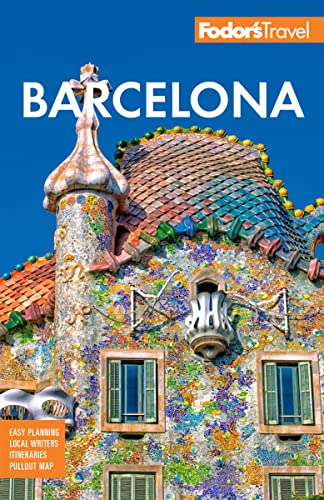Train Travel
International overnight trains to Barcelona arrive from many European cities, including Paris, Grenoble, Geneva, Zurich, and Milan; the four-a-day high-speed trains to and from Paris take about 5½ hours, and advance-purchase tickets online are competitive with flight prices. Almost all long-distance trains arrive at and depart from Estació de Sants, though many make a stop at Passeig de Gràcia that comes in handy for hotels in the Eixample or in the Ciutat Vella. Estació de França, near the port, handles only a few regional trains within Catalonia. Train service connects Barcelona with most other major cities in Spain; in addition a high-speed Euromed route connects Barcelona to Tarragona and Valencia.
Spain’s intercity services (along with some of Barcelona’s local train routes) are the province of the government-run railroad system—RENFE (Red Nacional de Ferrocarriles Españoles). The high-speed AVE train now connects Barcelona and Madrid (via Lleida and Zaragoza) in less than three hours. (Spain has more high-speed tracks in service than any other country in Europe.) The fast TALGO and ALTARIA trains are efficient, though local trains remain slow and tedious. The Catalan government’s FGC (Ferrocarril de la Generalitat de Catalunya) also provide train service, notably to Barcelona’s commuter suburbs of Sant Cugat, Terrassa, and Sabadell.
Information on the local/commuter lines (rodalies in Catalan, cercanias in Castilian) can be found at www.renfe.es/cercanias. Rodalies go, for example, to Sitges from Barcelona, whereas you would take a regular RENFE train to, say, Tarragona. It’s important to know whether you are traveling on RENFE or on rodalies (the latter distinguished by a stylized C), so you don’t end up in the wrong line.
Both Catalonia and the Basque Country offer scenic railroad excursions. The day train from Barcelona to Madrid runs through bougainvillea-choked towns before leaping out across Spain’s central meseta (plateau) via Zaragoza, most trains arriving at Atocha Station in Madrid in about 2½ hours. The train from Barcelona’s Plaça de Catalunya north to Sant Pol de Mar and Blanes runs along the edge of the beach.
First-class train service in Spain, with the exception of the coche-cama (Pullman) overnight service, barely differs from second class or turista. The TALGO or the AVE trains, however, are much faster than second-class carriers like the slowpoke Estrella overnight from Barcelona to Madrid, both with limited legroom and general comforts. The AVE is the exception: these sleek, comfortable bullet trains travel between Barcelona and Madrid or between Madrid and Seville. Some 30 AVE trains a day connect Barcelona and Madrid, with departures from 5:50 am to 9:15 pm. Trips take from 2 hours 30 minutes to 3 hours 10 minutes.
During peak travel times (Easter, August, and Christmas), it’s important to make a reservation weeks or even months in advance; on routes between major cities (Barcelona to Bilbao or Madrid, for example), it’s a good idea to reserve well in advance, especially for overnight trips.




